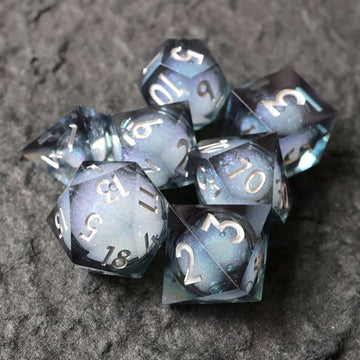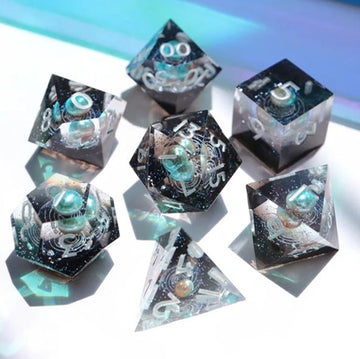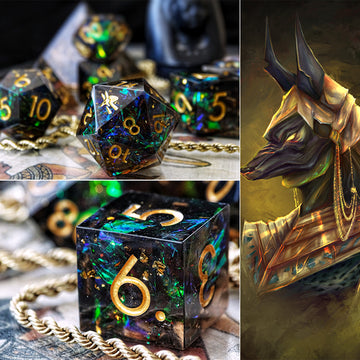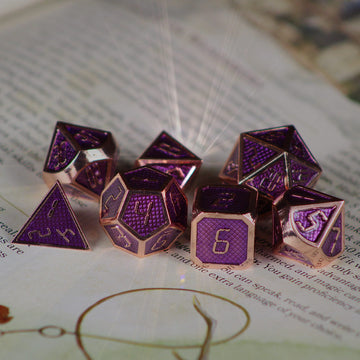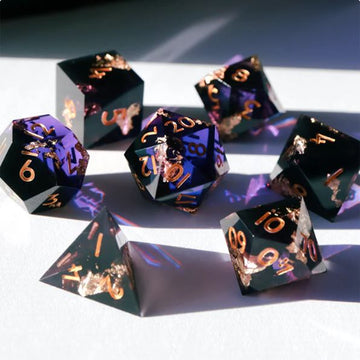By Riley Rath
Make Any Character and Adventure More Magical with a Fantasy Animal Companion!
You're playing Dungeons and Dragons... things are getting tense... the lich is about to cast a spell... when suddenly!!
Your dog eats crumbs under the table...
Or your cat hops up into your lap...
One way or another, our pets insert themselves into the game. And when that happens, a lot of players think:
"Oh yeah... I have a pet in real life... why shouldn't my character have a pet!?"
You could, of course, choose a dog or a cat, and any animal from the zoo would make a fantastic pet in D&D.
But we aren't just playing a fantastic game... we are playing a fantasy game.
A fantasy world full of ghouls and ghosts, wizards and watchtowers, elemental planes and elven domains... dungeons and dragons!
So given that we are in a magical world, what magical pets are available to DnD players?
I have sifted through the 5e Monster Manual and found you 19 D&D beasts and monsters that could theoretically (and with DM approval) function as fantasy companions in any DnD campaign.
Table of Contents
Ground Rules for 5e Fantasy Pets
19 D&D Fantasy Pets
-
Mimic
-
Hippogriff
-
Awakened Tree
-
Owl Bear
-
Flying Snake
-
Gelatinous Cube
-
Wyvern
-
Displacer Beast
-
Guard Drake
-
Pet Swarm
-
Blink Dog
-
Dinosaur
-
Bulette
-
Giant "Whatever"
-
Rust Monster
-
Pseudodragon
-
Undead Animal
-
Griffon
-
Ghost
-
Basilisk
Conclusion: More DnD 5e Magical Pets
Ground Rules for 5e Fantasy Pets
The definition of a pet is "a domesticated animal kept for pleasure rather than utility" (Merriam-Webster). These are not animals you bargain or reason with, but own; a creature you build a mutually beneficial as well as affectionate partnership where the human is the "alpha."
Let's start with what CANNOT be a pet:
- Anything with so high an intelligence that it would be immoral to "own" it.
- Any creature that, consciously or instinctually, is bound to a higher power.
- A creature that has been tricked or sworn into service.
- A creature that merely obeys due to some sort of promise or pact.
- Any creature that is unaligned, being neither good nor evil.
Basically, we are looking for low intelligence beasts or monsters that can be raised or tamed.
There will be a few exceptions to these rules in our list. But overall, just like in the real world, these are beasts and monsters that, in the wrong situation, might be enemies and, in the right situation, can be considered loyal friends.
Another important point: a pet is not the same as a combat companion! If you want to build a character that, in combat, works in tandem with your pet, play the Beast Master Ranger or the Circle of the Shepherd Druid.
Ultimately, you have this creature as a pet because it brings your player character pleasure, not because they have some huge mechanical benefit for combat, exploration, or role-playing.
That said, many of these pets do come with mechanical, practical benefits. And as we all know, if your character is trying to flirt, a cute puppy can only help...
Already love our stuff? Sign up and stay up to date on everything we post.
19 D&D Fantasy Pets for Any D&D Campaign
Here are 19 DnD pet ideas that, with a little wiggle room from your Dungeon Master, can make your Dungeons and Dragons Fifth Edition campaigns a little more magical and full of fantasy beasts and monsters!
Mimic (Monster Manual - page 220)

That's right... I'm STARTING with the mimic. Just so you know what kind of post you are getting yourself into!
The mimic is a D&D original and one of its most iconic monsters. Mimics tend to live exclusively in dungeons deep underground, and given that they eat anything, there is no logical reason it would not consider you, its master, as food.
But page 167 of Tasha's Cauldron of Everything discusses sentient, daylight colonies of mimics and Zee Bashew mentions that in Dungeons and Dragons lore, mimic's have been known to be sentient and capable of communication.
I think that through a series of regular findings, a player could theoretically cause the mimic to consider them as a bringer of food rather than food itself. After that... maybe... they become... a backpack you wear? Or a watch? Or a cart?
Regardless, you better keep feeding it... or else...
Hippogriff (Monster Manual - page 184)

Image belongs to Wizards of the Coast
I started with a "long shot" of a monster, so I'll go to something familiar next: the Hippogriff. This is an animal, originally from Greek mythology, that is a combination of an eagle and a horse. It can fly with its wings, gallop with its hooves, and attack with its beak and claws.
And good news: the designers from WOTC explicitly state that these are the best flying mounts in 5e! Hippogriffs can be held in captivity, are easy to train, and are loyal to the end.
Awakened Tree or Shrub (Monster Manual - page 317)

Image courtesy of Vanessa Ybarra
Awakened plants are created when a magic user casts the "Awaken" spell on a normal plant, giving them previously impossible awareness and abilities. Technically, this creature has too high of an intelligence (10) to have as a pet: they know a single language (not sure if they speak or if it's telepathic... let us know in the comments) and are able to uproot themselves and move.
That said... with a little homebrewing you could make this a very interesting, very strange plant-pet. Homebrew away its mobility ability and you have a talking, potted plant in your party's cart that acts as a pet!
Yes... just like Groot...
Owlbear (Monster Manual - page 249)

Image belongs to Wizards of the Coast
Owlbears have the head of an owl and the body of a bear covered with owl feathers.
I have tried (and failed) to convince numerous DMs to let me have a pet Owlbear... all in vain. I just love the idea of a pet that can terrorize with a roar AND let out a cute "hoot" now and then.
But despite how cute and fuzzy I imagine them to be, owlbears are FEARLESS KILLING BEASTS. They hunt at night and tear their victims limb from limb. Considering an owl can turn their head 360 degrees, I would maybe add that flaking enemies do not get advantage as a fun additional mechanic.
The Monster Manual has multiple paragraphs discussing how wood elves, hobgoblins, giants, and frontier tribes are known to have tamed and integrated owlbears into their cultures.
Flying Snake (Monster Manual - page 322)

Image belongs to Wizards of the Coast
To long-time players, this is no surprise: the flying snake has long be considered one of the best DnD animal companions for the 5e Ranger. True, it is just a snake that can fly, but with a handful of notable differences: A) flying is way better than walking, B) it doesn't provoke opportunity attacks, allowing it to safely navigate a chaotic battle, C) it does poison damage, and D) it has blindsight.
Gelatinous Cube (Monster Manual - page 242)

Image belongs to Wizards of the Coast
The Gelatinous Cube is a Gary Gygax original, a monster form of ooze that is clear and, well, a cube. In general, oozes are made of various forms of acid, dealing particularly harsh damage to a unique material.
Admittedly, the Gelatinous Cube is stupid. It's 1 Intelligence technically makes it incapable of allying itself with other beings: if an arch devil or a child approached the Gelatinous Cube, it would treat them the same. It also shuns the heat and the light, preferring dark, cool dungeons. So why even include it on this list?
Because the idea of a clear, cubed ooze pet following an adventurer around, clearing up garbage, being fed body parts of enemies they kill, still feels like a perfect D&D fantasy pet. And if Will from the Dungeoncast is open to having one, then I figure it should at least be considered by DMs everywhere. Just make sure you don't accidentally walk into it.
Loving this post? We try to write awesome stuff like this twice a month. Sign up so you don't miss out!
Wyvern (Monster Manual - page 303)

Image belongs to Wizards of the Coast
Wyverns are similar to dragons, but instead of arms and wings on their back, a Wyvern's wings, seated sort of on their sides, replace their arms entirely. They are also dragon-like monsters, lacking all the magic and intelligence of true dragons.
The Monster Manual states that while they are hunted for their potent stinger-venom, they can also be tamed. Though I imagine it would take well over a year for a hatchling to grow to maturity. And they are so aggressive and ferocious by nature that any adventurer would have to be constantly on their guard.
Displacer Beast (Monster Manual - page 81)

Image belongs to Wizards of the Coast
A displacer beat is like a panther but with six legs, two tentacles, glowing green eyes, and an illusory blur effect that causes viewers to believe the creature is a few feet from where it actually is. And did I also mention it's from the feywild?
They were tamed by the Unseelie Court (sorta the "bad guys" of the feywild) but were also bred to be especially evil, hunting their prey for sport. Since they are born unaligned, this breaks one of my rules - that D&D pets cannot be unaligned - and presents some unique difficulties when it comes to taming and training. I suggest reading this reddit post for tips.
That said, I don't know a DM that wouldn't let you tame a cub as cute as this one!

Guard Drake (Volo's Guide to Monsters - page 158)

Image belongs to Wizards of the Coast
Despite looking like a dragon without wings, Guard Drakes are actually reptiles, not dragons, created in a magical ritual. A couple of benefits: 1) when it hatches, it immediately imprints on the first creature it sees, and 2) they fully mature by 3 weeks and can be fully trained in that time.
The downside: they are created via a ritual involving pounds of dragon scales, and a dragon is needed to help in the ritual... so... good luck with that.
A Pet Swarm (Monster Manual - page 338-339)

Now, it's hard to imagine considering a swarm of anything a "pet," but these are magical fantasy pets! And as far as I can tell, a swarm of rats surrounding the rogue is the only way to make them even more of an edge lord.
I would imagine a swarm would have to operate like some sort of hive mind, or have a queen that speaks for them... kinda like the school of fish in Finding Nemo. Or if the player is a warlock or cleric, they could be gifted the ability to speak to each individual animal in the swarm. There are several options for swarms in DnD: insects, rats, ravens, each have slightly different in-game benefits.
Blink Dog (Monster Manual - page 318)

Image belongs to Wizards of the Coast
In the real world there is the trope of "cats and dogs" hating each other... in the feywild of Dungeons and Dragons, it's "displacer beasts and blink dogs."
The Blink Dog is similar to a dog in every way except one: it can teleport in and out of existence, and up to 40 feet! Needless to say, it would be pretty hard to keep this dog on a leash. They inexplicably have a 10 in intelligence, even though a dog has only 3 (probably because it's technically not a beast, but a fey creature!). But just take away their understanding of Sylvan and you are good to go.
Dinosaur (Monster Manual - page 79)

Never forget that there are dinosaurs in the Forgotten Realms.. which means it could be called Dungeons and Dinosaurs and Dragons (D&D&D). And since dinosaurs have been extinct for millions of years, these beasts make the cut as "fantasy pets."
Whether you prefer the horrific monsters of Jurassic Park or the cuddly friends from Land Before Time, virtually any dinosaur can become your party pet! Choose from triceratops, raptors, the T-Rex, and more. And if you put a dinosaur skin on a similar creature's stat block, the options are limitless. For more information on helping your DM integrate dinosaurs into your campaign, check out the Black Citadel RPG.
Paladins and Barbarians? Check out our other blog posts or click here to receive an update on new posts.
Bulette (Monster Manual - page 34)

Image belongs to Wizards of the Coast
You know those videos from Shark Week of great white sharks launching themselves into the air to catch a seal? Imagine that, but on LAND.
The bulette is a hard-domed created with claws that burrows as fast as it can walk. This gives them their nickname: "land shark"... capable of burrowing from beneath the earth and bursting out any time adventurers wander into their hunting grounds. The description speaks of nesting grounds that explorers can go to, presumably, tame or raise an infant bulette as a pet.
But don't try to ride them like free Willy... that would be A LOT of bludgeoning damage.
GIANT Versions of Normal Animals (Monster Manual - page 323-330)

Sometimes fantasy isn't all that different from real life. Sometimes fantasy is just taking something normal and making it GIANT. Take a medieval castle, triple it in size, and you got Winterfell. Take a magical forest, make the trees enormous, and you got Lothlorian. And if you want a giant wasp or owl or shark or goat or whatever as a pet... start with page 323 of the Monster Manual.
Rust Monster (Monster Manual - page 262)

Image belongs to Wizards of the Coast
The rust monster is one of the only monsters in all of Dungeons and Dragons that is mechanically capable of ruining your equipment: a single touch from their antenna can cause anything metal (including armor and weapons) to take a -1 penalty until they are destroyed.
The cow-sized monsters then consume the rust they create (like these "rusty dice"). They can sense metal and will attack, unprovoked, any create carrying metal, so the only way to train them in a state of calm would be to remove all metal from your body... so I guess just train them in robes or naked or something.
Pseudodragon (Monster Manual - page 254)

Image belongs to Wizards of the Coast
It's pretty clear that the designers made this creature simply because people thought the idea of a tiny little pet dragon would be cool. And they were right: they are a perfect magical pet for players (just don't let them hear you call them that).
These small, 1-foot-long monsters are described as "resembling dragons," but pseudodragons are not dragons or related to dragons. They are brightly colored, friendly, shy, and loyal. Though they have a higher intelligence (10), the Monster Manual describes them as cunning and catlike with a limited form of telepathic communication of emotions (no languages, though).
Undead Animal (Homebrew)

Just because your fantasy pet is dead doesn't mean they have to stop being your pet! So how do you make that happen?
For a fantasy game, Dungeons and Dragons has a surprisingly small amount of necromancy spells. Animate Dead wouldn't work because you would be actively controlling the monsters with every move. Ultimately, you would have to wait until level 9 to cast Raise Dead. But it is different than Resurrection, so once it is cast your pet will not actually come back to life and you will technically have an undead pet to love and cherish forever!
But... whatever animal you desire will have to have died within the past 10 days and it would be pretty messed up to kill your pet yourself only to raise them again. But then again, you are a necromancer, so maybe that is on brand...
Griffon (Monster Manual - page 174)

Image belongs to Wizards of the Coast
Half lion, half eagle... many have dreamed of making these mythological beasts pets since ancient times. Just like the Wyvern and Hippogriff, the Monster Manual explicitly states that they can be trained, though it requires hatching one and devoting plenty of time and money into doing so effectively. If the rest of your party has normal mounts, watch out: a Griffon's preferred food is horses and cows.
Ghost (Monster Manual - page 147... and Homebrew)

Another example of an "undead" pet! This one is fairly easy for DMs and players like: just say that your pet had some sort of "unfinished business" on the material plane, then have it join you as a ghost! Of course, I am imagining a "friendly ghost" like Casper or Zero from A Nightmare Before Christmas. And probs take away the "possession" and "horrifying visage" mechanics. Or at least only apply them to other living creatures of the same species... maybe send out your ghost dog to terrify or possess other guard dogs!
Basilisk (Monster Manual - page 24)

Image belongs to Wizards of the Coast
Unlike the basilisk from Harry Potter, the D&D basilisk is an 8-legged creature with a gaze that can turn people to stone... stone that they then eat. Sounds OP, right? Nope! The Monster Manual states that if the basilisk is born in captivity and raised correctly, it will intentionally shield its eyes from its master (or any individual friendly with its master). Personally, I see no reason a player could not have a blinded basilisk that relies on its sense of smell and owner to get around.
Conclusion: More D&D 5e Magical Pets
I have come up with 19 D&D pets perfect for any player wanting to add more magic and fantasy to their Dungeons and Dragons experience.
But you may still feel underwhelmed. Maybe these beasts and monsters aren't quite fantasy enough... not cuddly enough... not otherworldly enough.
In that case, you gotta homebrew: create your own fantasy 5e pet. Here are a few suggestions on creating new pets that feel magical without totally breaking the game:
- Imagine: Picture what the creature would look and act like.
- Stat Block: Pick one animal from the animal stat block that will most resemble the creature you want to create. Check out pages 304 - 311 of the Player's Handbook and 307 - 341 of the Monster Manual.
- Lore: Give the species at least one or two unique things about their habitat, mannerisms, or personality. Where do they live? How are they born? How do they feed? (Etc.)
- Mechanic: Take the animal stat block and add a single, unique, low-power ability to separate them mechanically from the common creature stat block. But remember: you're not a Circle of the Shepherd Druid or Beast Master Ranger... this is more flavor than function!
- Approval: Just because you imagined it doesn't mean it will be good for the game. Have a conversation with your DM to set expectations for how the pet might affect the game, and brainstorm ways to get your character the pet.
For example, you could have a purple otter (stat block) with six legs (imagine) that has a swimming speed (mechanic) and is commonly gifted to sea elf children to help them understand the duel relationship between land and sea (lore).
And if all else fails, you can just combine two animals to make something like the Owlbear, like they do in Avatar: The Last Airbender.
And there you have it!
And yes, I am sure I still missed some.
What are your favorite fantasy pets that others should know about? Reply in the comments and let us know!
Loved this blog? We write at least two a month and we'd like to let you know. Enter your email here to get our simple, not-annoying newsletter.
Riley Rath

Riley is a freelance tabletop games copywriter, content writer, and marketer based out of Spokane, WA. When not playing or writing about board games or DnD, he is busy with family, hiking, cooking, and gardening... very hobbit-like for a 6'4'' dude.




